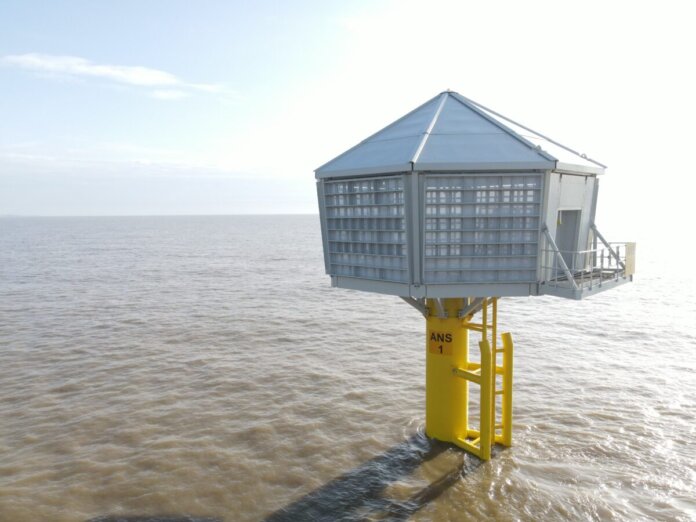Red7Marine recently completed the installation of three nearshore artificial nesting structures along the East Coast of England on behalf of Danish energy company Orsted. The structures are required as a part of the Development Consent Order for the Hornsea Three Offshore Windfarm as an ecological compensation measure for a vulnerable seabird species – the Black-legged kittiwake.
Red7Marine has been managing the fabrication and installation process, working with Orsted and its designers since August 2022. Two of the artificial nesting structures are located approximately half a mile from the shoreline of South Beach, Lowestoft, and the third is about a mile from the shoreline of the RSPB Minsmere Nature Reserve.
This nearshore artificial nesting structure project is the first of its kind. Each structure is purpose-built and specific to the landscape characteristics of each location. The structures also present an educational opportunity, allowing researchers to better understand kittiwake. The nesting structures will be monitored yearly to count the number of birds, occupied nests and their productivity.
In addition to being equipped with navigation lights and systems, each artificial nesting structure has approximately 500 nesting spaces. Ecologists, architects and engineers collaborated on the nest designs to ensure they are attractive to kittiwake and fit in with the landscape. For example, they have narrow ledges and vertical sides to replicate the cliffs where kittiwake would naturally nest. The main structure is off-white to blend in with the sky and sea.
Kristen Branford, managing director at Red7Marine comments: “These structures will play a crucial role in supporting an important and vulnerable species, while enabling the generation of clean, green electricity for the Hornsea 3 project. This project is the first of its kind and required meticulous planning and consideration, and we are proud to have achieved this significant milestone.”




